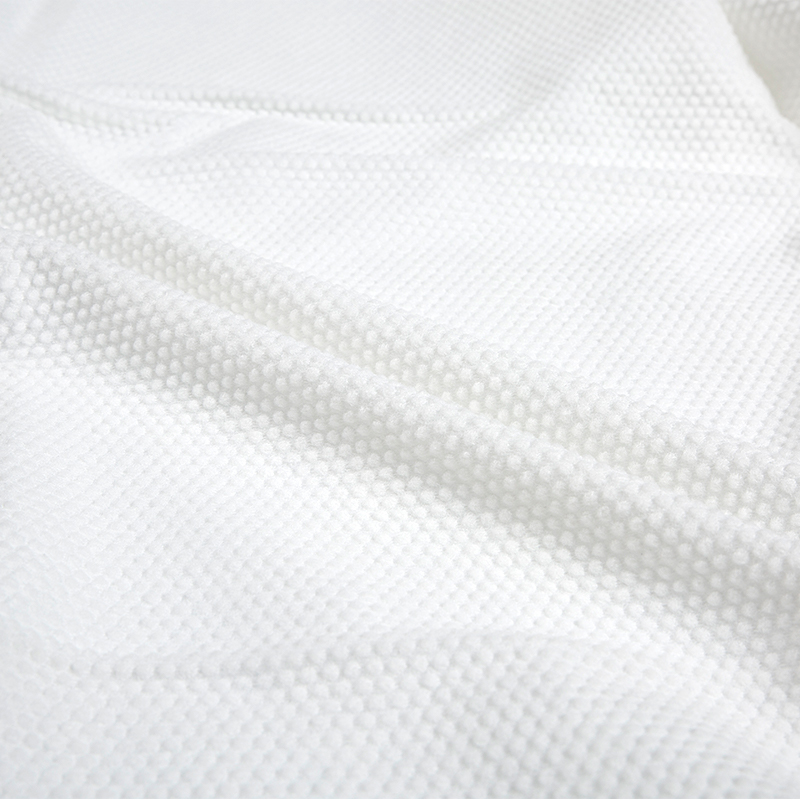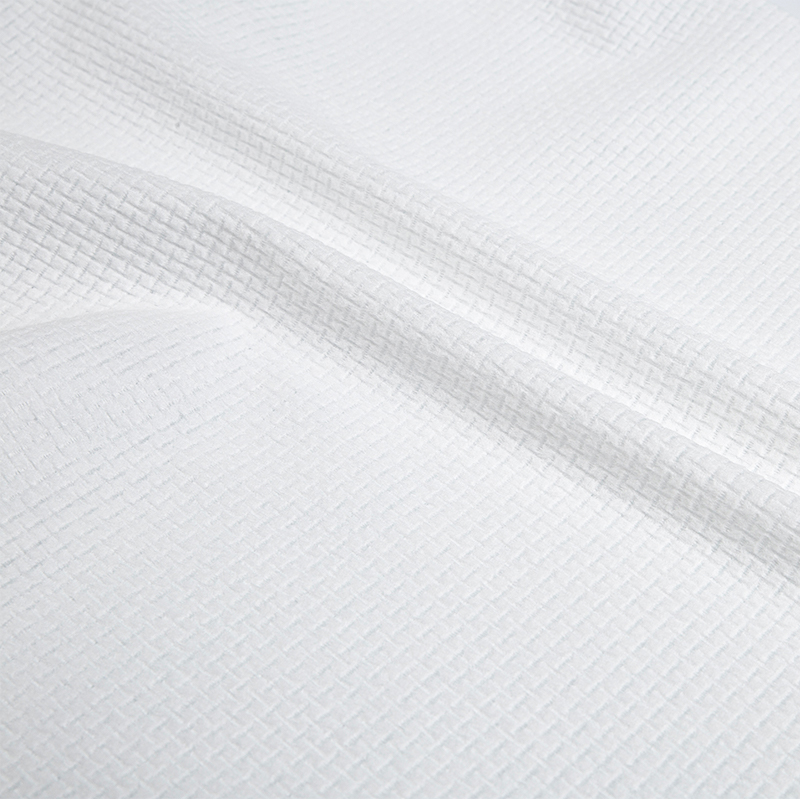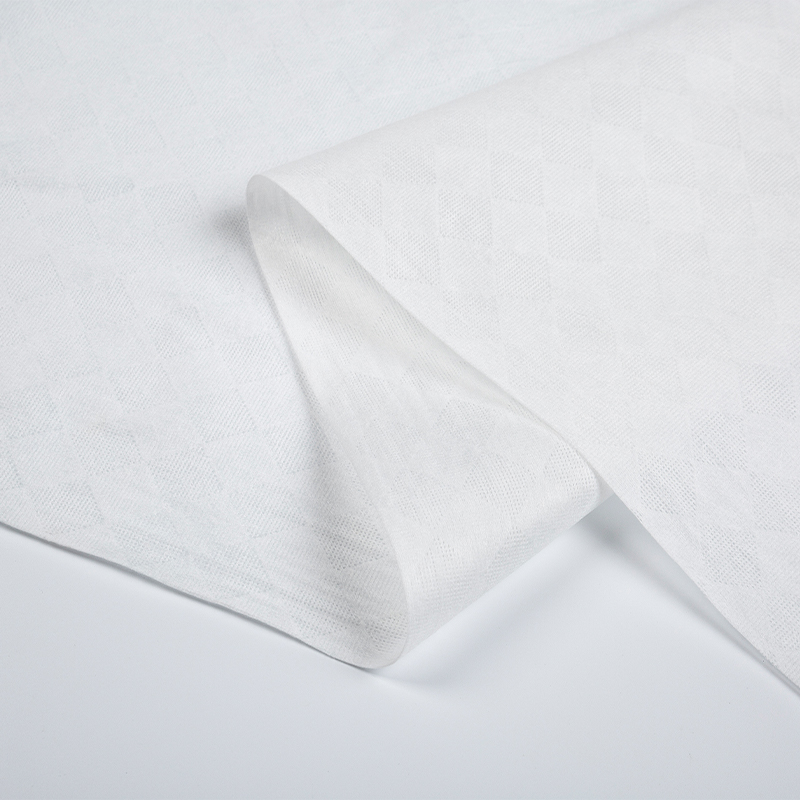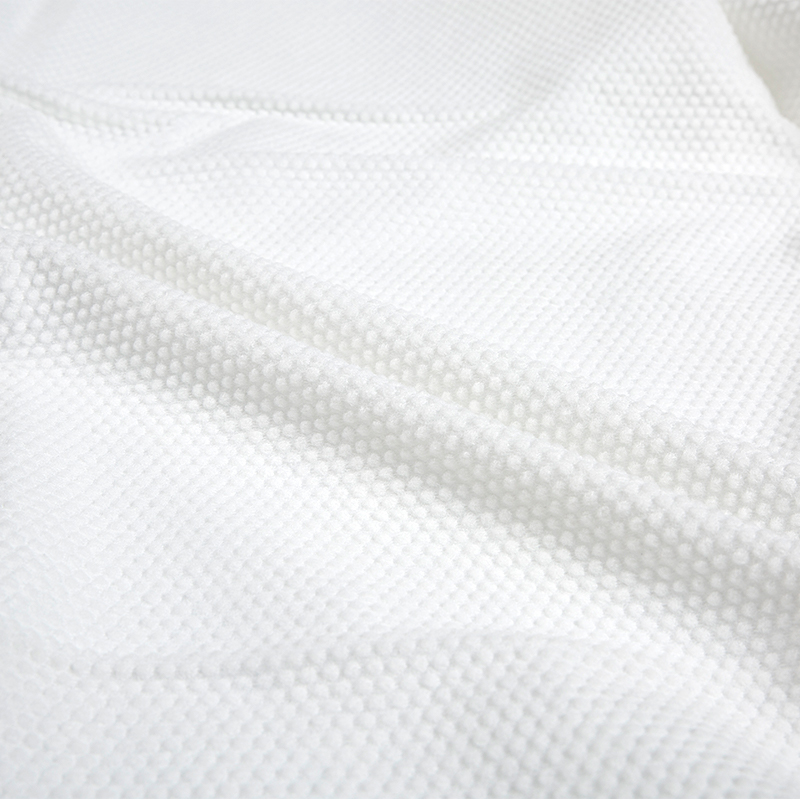Founded in 2022, Hangzhou Shunlong Nonwovens Technology Co., Ltd. is a professional China nonwoven fabric manufacturer and non-woven raw material factory
The performance breakthrough of Pearl honeycomb pattern spunlace nonwoven fabric comes from the ingenious design of its microstructure. The hydroentanglement process gives the nonwoven fabric a basic structure of entangled fibers, and the special form of the pearl honeycomb pattern is superimposed by customized molds and precise process parameters. The honeycomb-shaped regular hollow or semi-hollow structure is evenly distributed in a precise hexagonal geometric form. This design transforms the flat nonwoven fabric into a three-dimensional porous network. Each honeycomb unit is like a micro-container, connected to each other but functionally independent, greatly expanding the specific surface area of the material in a limited space. The pearl-like protrusions are orderly embedded in the honeycomb structure. They are not only an innovation in surface morphology, but also a strengthening node of the internal mechanical structure.
Geometric Revolution in Adsorption Performance
The honeycomb structure can be called a geometric revolution in the adsorption performance of pearl honeycomb pattern spunlace nonwoven fabric. Its regular hollow form breaks the planar adsorption mode of traditional nonwoven fabrics and constructs an efficient three-dimensional adsorption system. When liquid contacts the surface of nonwoven fabric, the pores of honeycomb structure quickly form diversion channels by capillary action, and liquid is quickly sucked into the internal space along the hexagonal cavity wall. The huge storage network composed of countless honeycomb units is like a precise sponge matrix, which can not only achieve rapid absorption of liquid, but also effectively prevent back-seepage. In the capture of solid particles, the pore size of the honeycomb structure is precisely designed to form a size screening barrier, which effectively intercepts particles such as dust and impurities through the dual effects of surface tension and mechanical interception. This innovation in geometric form enables pearl honeycomb pattern spunlace nonwoven fabric to show adsorption efficiency far exceeding that of traditional materials in the fields of sanitary care, industrial filtration, etc.
Three-dimensional reinforcement of mechanical properties
The pearl-like protrusions give pearl honeycomb pattern spunlace nonwoven fabric unique mechanical performance advantages. These protrusions are not simple surface decorations, but functional structural units that have been mechanically optimized. Inside the material, the pearl protrusions are like supporting nodes of a three-dimensional skeleton. When the nonwoven fabric is subjected to external force, they can evenly disperse the stress to the surrounding fibers to avoid the risk of breakage caused by local force concentration. In terms of surface performance, the protrusions increase the friction coefficient of the material, making the non-woven fabric have stronger grip in application scenarios such as wiping and wrapping. In the face of repeated friction, the pearl protrusions buffer the impact of external forces through their own elastic deformation, protect the internal fiber structure, and significantly improve the wear resistance of the material. This three-dimensional reinforcement design allows the non-woven fabric to have durability while maintaining a soft and skin-friendly texture.
Fusion and innovation of multi-dimensional performance
The honeycomb structure and pearl protrusions of the pearl honeycomb pattern do not act in isolation, but through exquisite synergy, they achieve a fusion and innovation of performance. The porous network constructed by the honeycomb structure provides a spatial basis for the adsorption of liquids and particles, while the mechanical skeleton formed by the pearl protrusions ensures the stability of the structure during use. When the non-woven fabric absorbs a large amount of liquid, the pearl protrusions prevent the honeycomb structure from collapsing and deforming due to the weight of the liquid; when subjected to mechanical friction, the pores of the honeycomb structure alleviate the direct force of the pearl protrusions, and the two support each other and complement each other's shortcomings. This structural synergy breaks the limitation of traditional non-woven fabrics that it is difficult to balance adsorption and durability, so that pearl honeycomb pattern spunlace nonwoven fabric can meet complex application needs with comprehensive performance in multiple scenarios such as medical dressings, household cleaning, industrial wiping, etc.

 English
English 日本語
日本語 русский
русский Español
Español






